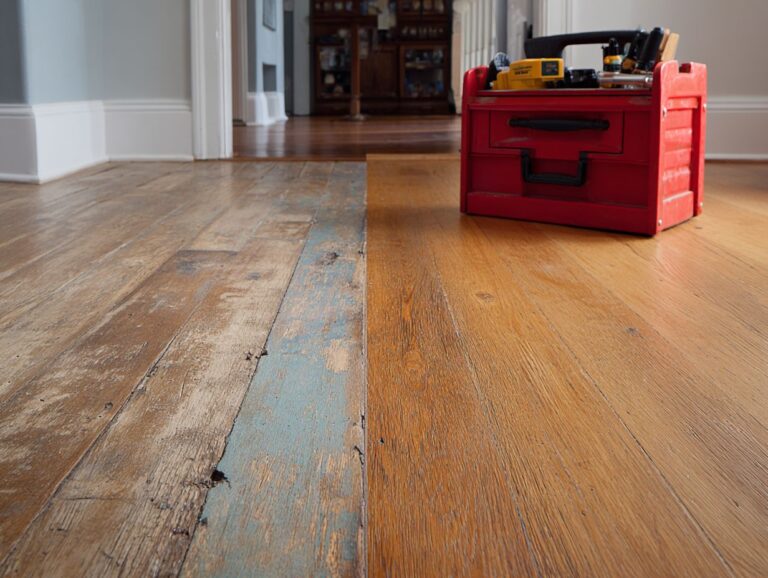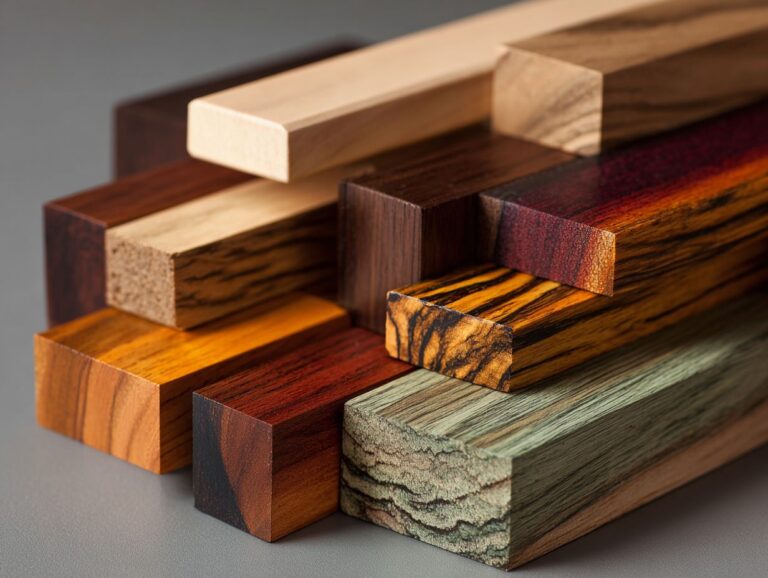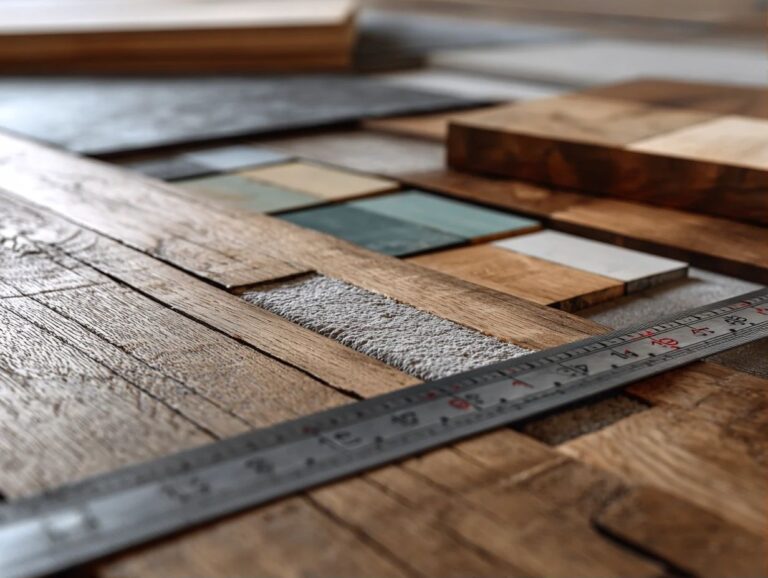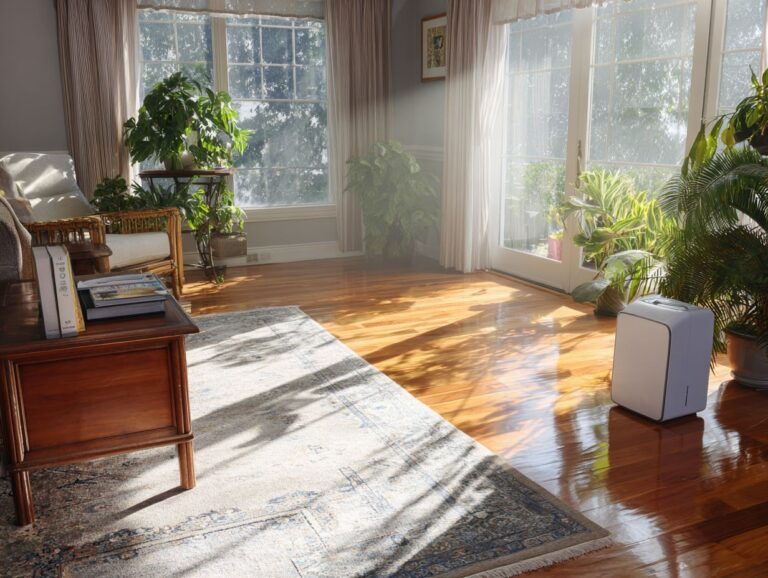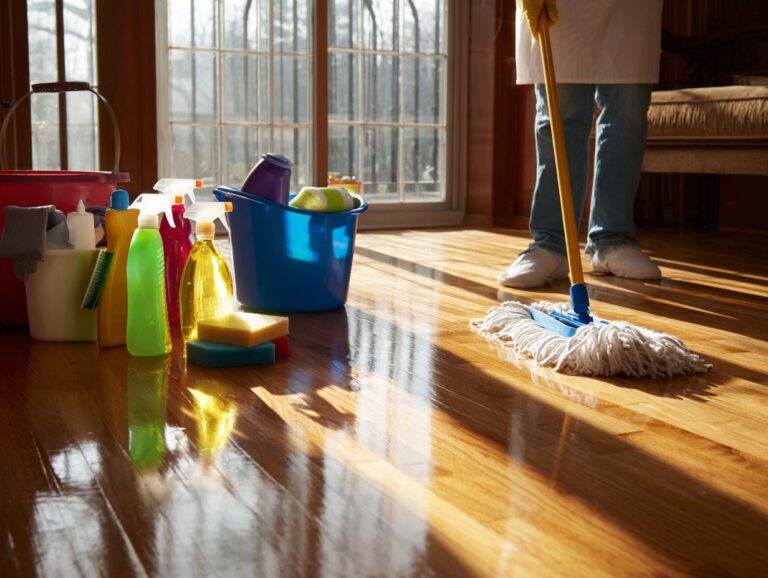Eco-Friendly Flooring Trends – Sustainable Options
Contents
- Introduction to Eco-Friendly Flooring
- Types of Eco-Friendly Flooring
- Benefits of Eco-Friendly Flooring
- Current Trends in Eco-Friendly Flooring
- Eco-Friendly Flooring Market Statistics
- Installation and Maintenance
- Cost Considerations
- Frequently Asked Questions
- What are some popular eco-friendly flooring trends?
- What makes bamboo a sustainable flooring option?
- Why is cork a great choice for eco-friendly flooring?
- How is reclaimed wood considered sustainable for flooring?
- What is linoleum and why is it a sustainable flooring option?
- Are there any eco-friendly flooring options for those on a budget?
Introduction to Eco-Friendly Flooring
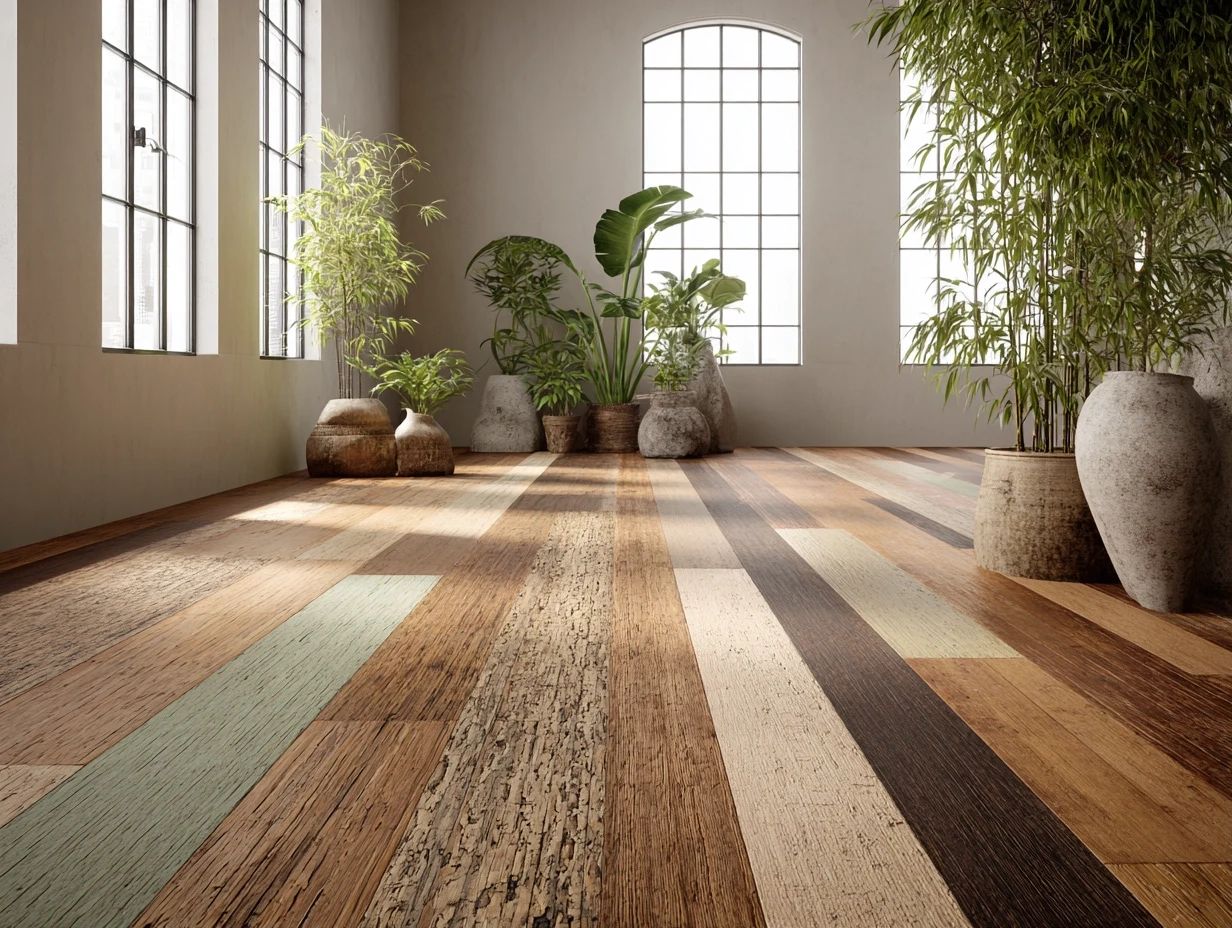
Key Takeaways:
Definition of Eco-Friendly Flooring
Eco-friendly flooring encompasses materials like bamboo, cork, and reclaimed wood that are sustainable, non-toxic, and promote indoor air quality.
These materials meet specific criteria: they often come from sources that minimize environmental impact, such as bamboo, which grows rapidly and requires little water; cork, harvested from tree bark without harming the tree; and reclaimed wood, repurposed from old structures.
When choosing flooring, check for certifications such as FloorScore or Forest Stewardship Council (FSC) to confirm low emissions and responsible sourcing. Consider biodegradable options that break down naturally, further minimizing environmental harm at the end of their life cycle.
Importance of Sustainable Options
The shift towards sustainable flooring options is critical due to the rising awareness of toxic chemicals found in conventional flooring materials.
Research indicates that traditional flooring can release harmful substances like formaldehyde, contributing to respiratory issues and other health problems.
In contrast, sustainable flooring choices-such as bamboo, cork, or reclaimed hardwood-greatly reduce these risks. For instance, a study by the U.S. Green Building Council found that using low-VOC materials can improve indoor air quality by up to 30%.
By choosing these eco-friendly options, homeowners help improve health and protect the environment. This choice directly reduces landfill waste and saves resources.
Types of Eco-Friendly Flooring
Different types of eco-friendly flooring options appeal to a range of styles and environmental considerations, each offering specific advantages. If you’re curious about how these choices might affect home sale prices, check out our Realtor insights on flooring impact.
Bamboo Flooring
Bamboo flooring is a fast-growing option and can be harvested every 3-5 years. This makes it a more eco-friendly choice compared to regular hardwood.
Plus its rapid renewability, bamboo flooring boasts impressive durability, often surpassing traditional hardwoods like oak.
It’s processed using low-VOC (volatile organic compounds) glues, resulting in better indoor air quality. Sourcing practices typically involve selecting bamboo from sustainably managed forests, ensuring minimal environmental degradation.
To maintain its beauty and longevity, use mild cleaners designed specifically for bamboo. Using this flooring in your home improves the look and supports environmental practices with little maintenance needed.
Cork Flooring
Cork flooring, made from the bark of cork oak trees, is harvested without harming the tree, showcasing an excellent example of sustainable harvesting.
This eco-friendly flooring boasts impressive insulation properties, keeping homes warm in winter and cool in summer. The built-in padding provides comfort for walking, making it ideal for crowded places.
Cork flooring absorbs sound remarkably well, reducing noise levels in busy households. To be confident about responsible sourcing, choose certifications like the Forest Stewardship Council (FSC).
With options available from brands like Amorim and US Floors, homeowners can find styles that fit their aesthetic while prioritizing sustainability.
Reclaimed Wood Flooring
Reclaimed wood flooring repurposes old timber, providing a unique aesthetic while reducing the demand for new lumber and preserving forests.
This type of wood features character marks, such as knots and color variations, which add charm to any space. It is typically more durable than new lumber, having aged over time, and is often sourced from old barns, factories, or ships.
It’s important to make sure reclaimed wood is treated correctly to remove pests and dangerous chemicals. Specialized treatments, like heat or a non-toxic sealant, can help achieve this, ensuring both safety and longevity in your flooring choice.
Linoleum Flooring
Linoleum flooring is made from natural substances such as linseed oil, pine resin, and jute, which makes it break down naturally and an eco-friendly choice for homes.
The production process begins with extracting linseed oil from flaxseed, which is then blended with natural resins and fillers like cork dust or wood flour.
This mixture is rolled out onto a jute backing, creating a durable surface. Unlike traditional vinyl flooring, which often contains harmful PVC, linoleum improves indoor air quality by emitting fewer volatile organic compounds (VOCs).
It is built to be long-lasting, often remaining in good condition for more than 40 years with regular maintenance. Regular cleaning and avoiding strong chemicals can help it last longer and keep its eco-friendly features.
Concrete Flooring
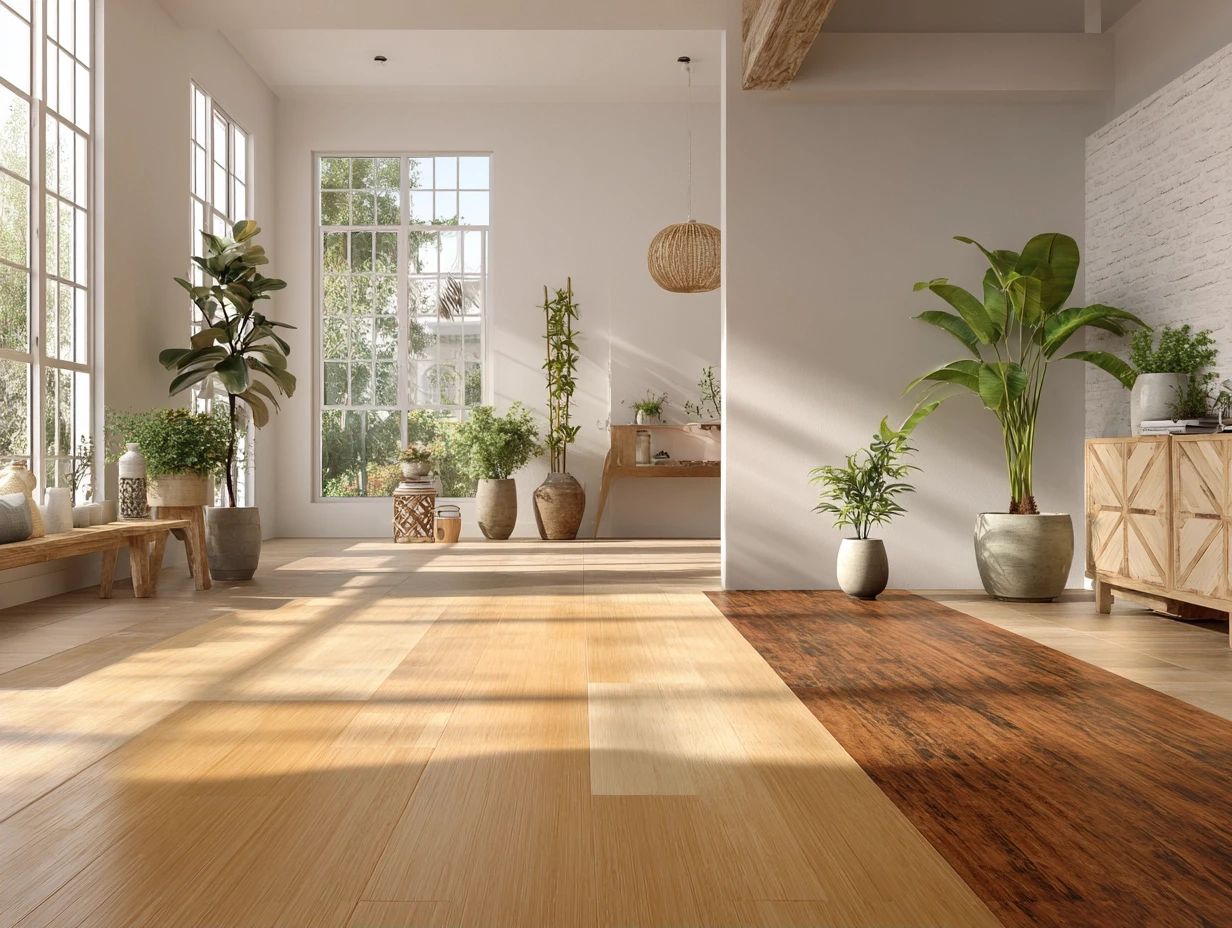
Concrete flooring is gaining traction as a sustainable option due to its longevity and the potential for using recycled materials in its production.
This sturdy choice reduces the need for frequent replacements and also has great thermal properties, helping to keep indoor temperatures steady.
You can improve its look by adding decorative materials or using stains and dyes, offering different finishes from shiny to industrial style.
Think about adding radiant heating when setting up, as it can make the space more comfortable and increase energy efficiency.
Tools required for this process include trowels, polishers, and a heat source, which together create a beautiful and sustainable flooring solution.
Benefits of Eco-Friendly Flooring
Selecting eco-friendly flooring helps the environment and offers clear health and financial advantages for homeowners. Related insight: VOC Emissions in Flooring – Standards and Health
Environmental Impact
Eco-friendly flooring significantly reduces the carbon footprint associated with traditional flooring materials, aligning with global sustainability goals.
By opting for materials like bamboo or cork, you can cut down on volatile organic compounds (VOCs) that contribute to poor indoor air quality.
Bamboo flooring grows quickly, and cork can be collected without damaging trees. Both are environmentally friendly and produce fewer emissions.
The Environmental Protection Agency (EPA) reports that having less VOCs in the air improves health, as fewer VOCs can ease breathing problems.
Choosing eco-friendly options helps the planet and makes homes healthier.
Health Benefits
Using eco-friendly flooring can improve indoor air quality by reducing contact with harmful chemicals that are common in regular flooring choices.
Homeowners say they’ve noticed big improvements in their health after changing to this option. A survey of families who put in bamboo floors showed a clear drop in allergy symptoms and breathing problems.
Many attributed their improved health to reduced volatile organic compounds (VOCs) released by such flooring materials. Using low-VOC adhesives and finishes can improve air quality.
Tools like the EPA’s Air Quality Index can help monitor indoor air changes post-installation, ensuring a safe environment for your family.
Durability and Longevity
Many eco-friendly flooring options, such as bamboo and reclaimed wood, are as durable as traditional materials, often outlasting them in high-traffic areas.
Bamboo can last up to 50 years if cared for correctly, offering a strong option compared to oak, which might need refinishing more often.
Reclaimed wood has a distinct look and is often denser after aging for many years, which makes it more durable.
To maintain these floors, use a pH-neutral cleaner and a microfiber mop to avoid damage.
In the end, both bamboo and reclaimed wood offer eco-friendly options that are strong and attract consumers interested in durable choices.
Current Trends in Eco-Friendly Flooring
The eco-friendly flooring market is changing, with current trends concentrating on design improvements, sustainable technologies, and better visual appeal.
Eco-Friendly Flooring Market Statistics
Eco-Friendly Flooring Market Statistics
Market Growth and Projections: Market Valuation
Market Growth and Projections: Regional Growth
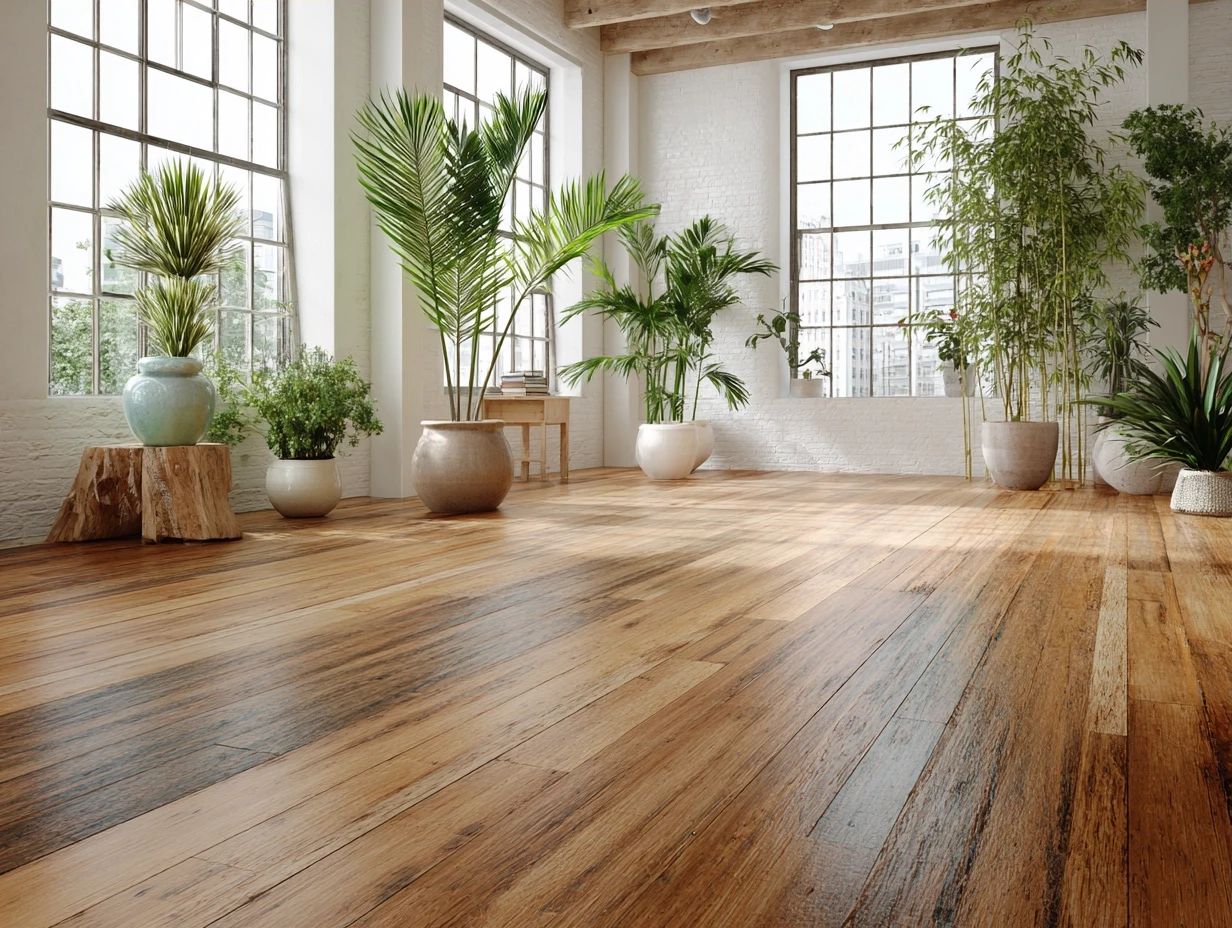
The Eco-Friendly Flooring Market Statistics share a clear story of development and local interactions. The market’s value is expected to grow substantially from a strong base $319.44 billion in 2025 to an impressive $630.73 billion by 2034. The fast growth shows more people around the world are using sustainable building materials. This change is due to more awareness about the environment and a greater demand from consumers for products that are better for the planet.
Market Growth and Projections Show how regions are doing now and what they might achieve later. A detailed analysis reveals varying compound annual growth rates (CAGR) across key regions:
- USA: A steady CAGR of 3.3% from 2025 to 2035 reflects the ongoing adoption of sustainable practices within the construction and renovation sectors.
- UK: With a CAGR of 2.9%, the UK market indicates a strong commitment to green building standards and ecological responsibility.
- EU: The European Union’s CAGR of 3.0% indicates steady growth, in line with the region’s strict environmental rules and sustainability objectives.
- Japan: A CAGR of 3.2% points to Japan’s increasing focus on integrating eco-friendly solutions within its urban development projects.
- South Korea: With a CAGR of 3.1%, South Korea demonstrates a growing market for eco-conscious construction solutions.
Moreover, the Asia-Pacific region is poised to capture a significant 35% share of the market by 2025, indicating its critical role in driving global demand for eco-friendly flooring solutions. This area’s fast growth and growing concern for the environment make it an important market.
The data shows a clear trend: the flooring industry is moving more towards sustainability. Businesses in this field are likely to focus on creating and improving materials that are environmentally friendly to stay competitive in a fast-changing market.
Design Innovations
Innovations in eco-friendly flooring design now allow for greater customization and aesthetic appeal, blending sustainability with modern trends.
Consumers are increasingly drawn to unique patterns and textures, such as herringbone or hexagonal tiles made from recycled materials.
Companies such as Cali Bamboo provide bamboo and cork flooring that add natural beauty and improve sound quality in houses.
Luxury vinyl tiles now come with lifelike wood and stone appearances, allowing homeowners to create stylish designs that are simple to care for.
This growing emphasis on both functionality and visually appealing designs showcases a powerful trend among eco-conscious buyers aiming to create stylish yet sustainable living spaces.
Color and Texture Trends
Today’s eco-friendly flooring options feature a diverse range of colors and textures that cater to various interior design styles.
Colors like deep browns and gentle greens are popular, matching the natural look of eco-friendly building designs.
For instance, cork flooring in a warm oak finish adds warmth without sacrificing eco-friendliness. The natural patterns of bamboo and the rough look of reclaimed wood make things look attractive and support environmental aims.
Using matte or low-gloss lacquer finishes can make rooms feel relaxing and welcoming. By choosing these materials, designers support environmental goals and improve the look of their spaces.
Integration with Smart Home Technology
Picking eco-friendly flooring along with intelligent home systems enhances efficiency and conserves energy and materials.
FloorControl’s Ecowalk flooring system tracks energy use with built-in sensors, giving immediate information on temperature and humidity.
LG and Mohawk also provide products that work with home automation hubs, letting users control heating and cooling with less effort.
Mohawk’s Smart Home carpet collection adjusts to room conditions to help conserve energy.
Installing these systems allows homeowners to cut energy costs by as much as 30%, presenting a good choice for those mindful of the environment.
Installation and Maintenance
Correct installation and regular maintenance of eco-friendly floors increase their durability and maintain their sustainability. For a comprehensive understanding, consider our floating floor installation guide, which provides step-by-step instructions to ensure optimal results.
Eco-Friendly Installation Practices
Adopting eco-friendly installation practices, such as using low-VOC adhesives and ensuring proper subfloor preparation, is essential for green flooring projects.
In addition, consider employing recycled materials like reclaimed wood or bamboo, which are sustainable and stylish.
Set aside 3-6 hours for installation to do a good job-this covers getting surfaces ready, measuring, and arranging materials. It’s important to hire certified installers, especially for cork or linoleum products, as their knowledge can prevent problems that could come from incorrect handling.
By following these guidelines, you’ll create a healthier indoor environment while enhancing the aesthetic appeal of your space.
Maintenance Tips for Sustainable Floors
Regular maintenance can prolong the life of eco-friendly floors while ensuring they remain aesthetically appealing and functional.
To maintain different types of eco-friendly flooring, adopt specific cleaning practices.
- For bamboo or cork, use a damp mop with biodegradable cleaners, avoiding excessive water to prevent warping.
- For linoleum, implement a weekly cleaning routine, vacuuming regularly and using a pH-neutral cleaner.
- Clean thoroughly every three months to remove built-up dirt and grime from all surfaces.
- Avoid harsh chemicals that can damage surfaces; opt for natural cleaners like vinegar or baking soda.
This active method keeps your floors looking good for a long time.
Cost Considerations
Knowing the expenses involved with eco-friendly flooring can help homeowners choose options that are good for their finances and the planet (our guide on flooring lifespan by material can help you understand replacement cycles).
Initial Investment vs. Long-Term Savings
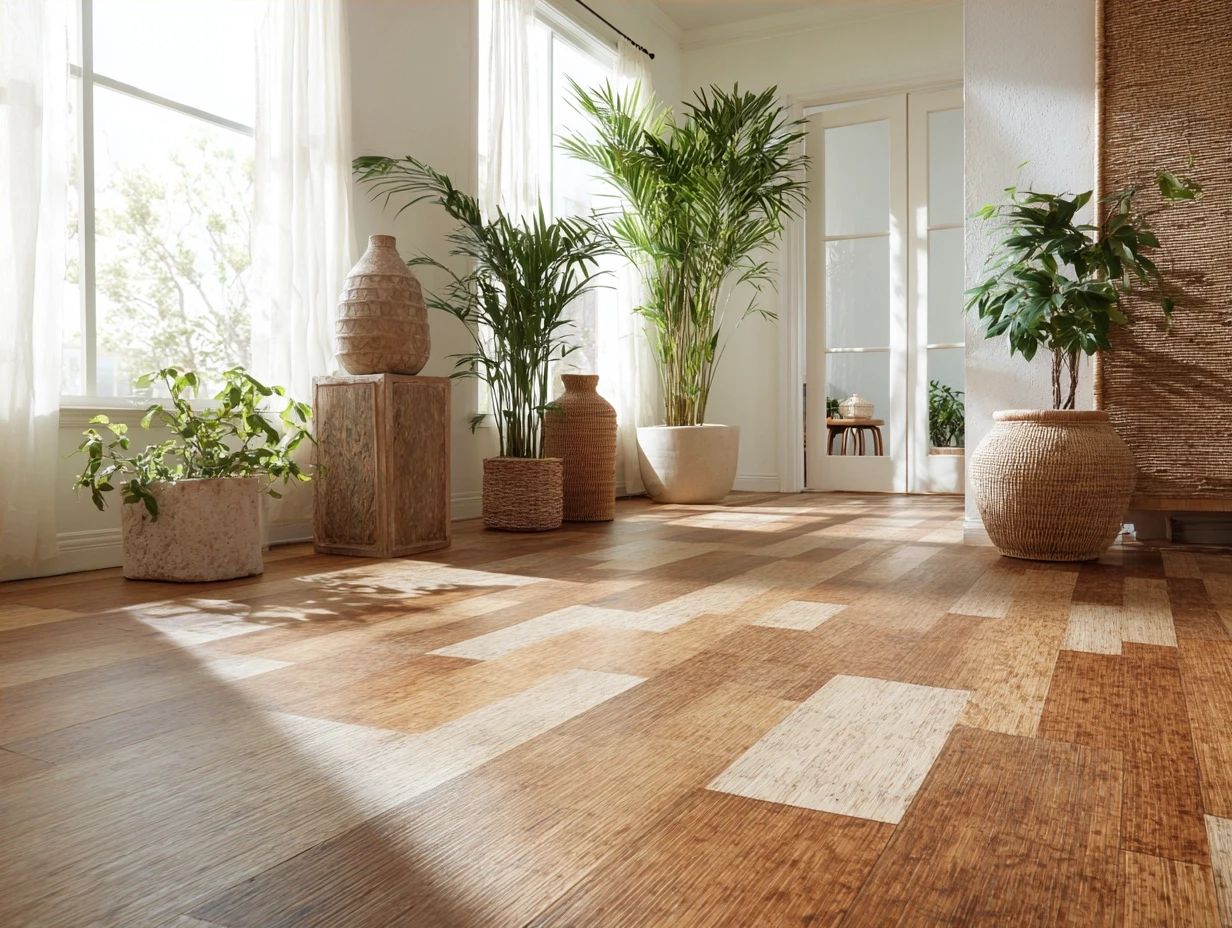
While initial costs for eco-friendly flooring materials may be higher, homeowners often recoup these expenses through savings in maintenance and energy efficiency over time.
Bamboo flooring costs about $3-$8 per square foot and is a tough option that resists moisture, which means it lasts a long time.
Similarly, cork flooring, typically costing $4-$12 per square foot, offers natural insulation, which can reduce heating costs by about 20%.
Incorporating radiant heating with eco-friendly options can maximize energy efficiency, further enhancing savings. Investing in these materials leads to an environmentally conscious home that pays off through lower energy bills and less frequent replacements.
Cost Comparisons with Traditional Flooring
Comparing the costs of eco-friendly flooring with traditional flooring options reveals that sustainability can be economically viable.
For instance, sustainable bamboo flooring typically costs between $3 and $8 per square foot, whereas traditional hardwood ranges from $5 to $12 per square foot.
Consider installation costs and longevity; eco-friendly options, like cork or reclaimed wood, often require similar installation expenses but last longer and need less maintenance.
The long-term costs for these environmentally friendly choices might decrease because they last longer and have less negative effects on the planet, proving they are a wise financial and ecological decision.
Future of Eco-Friendly Flooring
With growing awareness of environmental concerns, eco-friendly flooring is expected to get better, as new developments make it more sustainable.
We can expect increased use of materials like bamboo and cork. These materials are renewable and have a smaller environmental impact compared to traditional hardwood.
Advancements in technology will make recycling processes for vinyl and carpet better, leading to more eco-friendly outcomes.
Consumer demand is likely to push manufacturers towards transparency, requiring them to disclose the lifecycle and sourcing of materials.
Brands that focus on sustainability and provide eco-friendly certifications are expected to gain more of the market in the next ten years.
Frequently Asked Questions
What are some popular eco-friendly flooring trends?
Some popular eco-friendly flooring trends include bamboo, cork, reclaimed wood, and linoleum.
What makes bamboo a sustainable flooring option?
Bamboo is considered a sustainable option because it is a rapidly renewing resource that is harvested without causing damage to the environment. It is naturally resistant to water and bugs, which makes it a long-lasting option.
Why is cork a great choice for eco-friendly flooring?
Cork is a sustainable flooring option because it is made from the bark of cork oak trees, which can be harvested without harming the tree. It is also a natural insulator and can help reduce energy costs.
How is reclaimed wood considered sustainable for flooring?
Reclaimed wood is wood taken from old buildings and structures, then reused for flooring. This helps reduce the demand for new wood and minimizes the environmental impact of deforestation.
What is linoleum and why is it a sustainable flooring option?
Linoleum is a type of flooring made from natural materials such as linseed oil, cork, and wood flour. It is considered sustainable because it is biodegradable, non-toxic, and can last for many years, reducing the need for frequent replacements.
Are there any eco-friendly flooring options for those on a budget?
Yes, there are affordable eco-friendly flooring options such as bamboo and cork, which are both cost-effective and sustainable. Selecting reclaimed wood can be a cost-effective choice for eco-friendly flooring.
